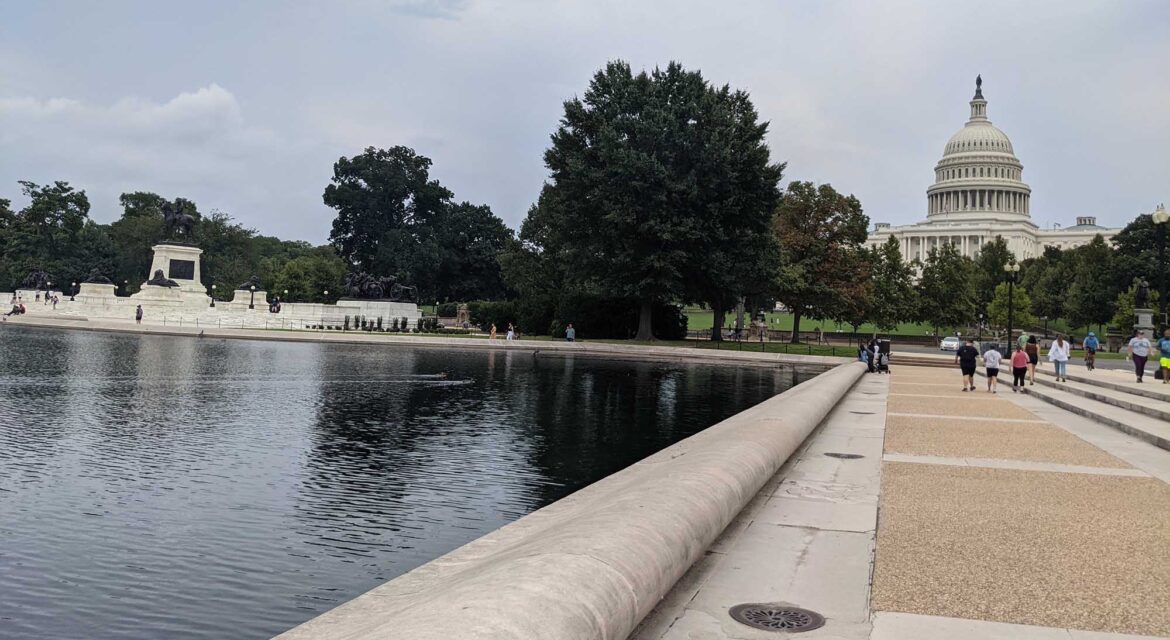 Although rarely referred to as such, Union Square has provided a powerful identity for the eastern edge of the National Mall around the United States Capitol Building in Washington D.C. This 11-acre public plaza at the foot of Capitol Hill contains numerous landmarks that have come to define an identity. It’s one that means a great deal to both residents and visitors on account of how the space and monuments within it connect it to the history of the city and nation.
Although rarely referred to as such, Union Square has provided a powerful identity for the eastern edge of the National Mall around the United States Capitol Building in Washington D.C. This 11-acre public plaza at the foot of Capitol Hill contains numerous landmarks that have come to define an identity. It’s one that means a great deal to both residents and visitors on account of how the space and monuments within it connect it to the history of the city and nation.

Defining Capital Hill
 The location of the United States Capitol Building was selected by the original designer of what would become the capital city of the United States. The land on which the U.S. Capitol stands was mentioned as “a pedestal waiting for a monument.” That pedestal is today known as “Capitol Hill.”
The location of the United States Capitol Building was selected by the original designer of what would become the capital city of the United States. The land on which the U.S. Capitol stands was mentioned as “a pedestal waiting for a monument.” That pedestal is today known as “Capitol Hill.”
A mid-19th-century extension of the U.S. Capitol required that the Capitol Grounds be enlarged. Frederick Law Olmsted presented a plan for a sophisticated landscape that highlighted the building it surrounded. In the years 1880-82, many features of the grounds were completed but all of these changes simply provided the foundation for the identity that now defines it.
The Capitol Reflecting Pool was part of a plan in the 1960s that was designed to reduce vehicular traffic on the Mall and facilitate pedestrian and recreational use. Six acres in size, it occupies over half of the area called Union Square. Since its completion in 1971, it has been a popular attraction but it is just one of the numerous features that have come to define Union Square.

A Three-part Sculptural Group
 The Grant Memorial dominates Union Square in numerous ways. Depicting Grant astride his warhorse Cincinnati, it was completed in 1924. It is 252 feet long and 71 feet wide and is divided into three sections.
The Grant Memorial dominates Union Square in numerous ways. Depicting Grant astride his warhorse Cincinnati, it was completed in 1924. It is 252 feet long and 71 feet wide and is divided into three sections.
The central feature is the statue of Grant, which is recognized as the largest equestrian statue in the United States and among the largest in the world. The statue resides in the middle of two other sets of sculptures that feature bronze representations of the Union cavalry and artillery. Four shorter pedestals feature bronze lions that protect both the United States flag and the flags of the Army. The monument marks the eastern terminus of the National Mall, which faces the Washington Monument and Lincoln Memorial that resides to the west.
The Garfield Monument sits closer to the US Capital and features multiple over-life-size bronze allegorical figures, with a portrait statue of Garfield at the top. Commissioned in 1884, Garfield is depicted giving a speech while the figures named the Student, the Warrior and the Statesman each represent the three significant periods in Garfield’s life.
The Peace Monument, also called the Naval Monument, was erected between 1877 and 1878 to commemorate the naval deaths at sea during the Civil War. Residing in the circle to the west of the U.S. Capitol, at the top are two allegorical figures of Grief and History, while below them is another life-size classical female figure that represents Victory. Various other figures and symbols are located across the monument. An example of idealized neoclassical sculpture, it became an official part of Union Square when the circle on which it stands was made part of the U.S. Capitol grounds in 1973.
This three-part sculptural group has created a powerful identity for Union Square which continues to evolve on the eastern end of the National Mall, showcasing what it can mean when such identities are connected to the past and present of a city and nation.

The Power of Identity
 Washington D.C. is a city filled with monuments and memorials that honor and celebrate the individuals and events that have come to define the United States of America. However, the identity that Union Square has cultivated thanks to the numerous and notable features it contains showcases what it can mean to stand out amidst such monumentous landmarks. In becoming a popular tourist attraction in and of itself, Union Square fully highlights the power of an identity to define the present and future of a space and city.
Washington D.C. is a city filled with monuments and memorials that honor and celebrate the individuals and events that have come to define the United States of America. However, the identity that Union Square has cultivated thanks to the numerous and notable features it contains showcases what it can mean to stand out amidst such monumentous landmarks. In becoming a popular tourist attraction in and of itself, Union Square fully highlights the power of an identity to define the present and future of a space and city.

